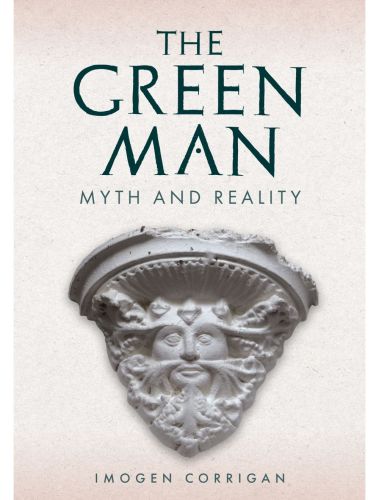
This readable book challenges preconcpetions. It may surprise some readers, but the Green Man isn’t green, and they aren’t all men. The foliate head is only known as the Green Man in the Anglophone world, thanks to the folklorist Lady Raglan, a follower of Frazer and his influential but flawed “Golden Bough” (1890-1915). Accordingly, they don’t seem to reflect enduring paganism, but their purpose remains unclear. Corrigan also notes that the alluring name has seen the foliate head conflated and confused with the Jack in the Green – the folkloric manifestation of the spring, historically paraded through post-medieval streets – and both the woodwose and Gawain’s Green Knight.
The author briefly discusses the wider origins of the foliate head, dismissing an oft-cited Roman example from Paris, considering Asian parallels and including a tenuous link to Sutton Hoo. However, her central argument is that what we know as the Green Man is a phenomenon across the Catholic west that should be regarded as a Christian trope, as befits the ecclesiastical context. The examination of the locations of foliate heads shows that they were visible and, in some cases, prominent; earlier examples are evident on, or close to the font or chancel arch and, accordingly, associated with Christian sacraments of baptism and the eucharist (communion). However, the phenomenon may be noted throughout church buildings.
Corrigan examines possible theological origins, citing the legend that seeds from the “Tree of Mercy” were placed under Adam’s tongue prior to his burial, and that a tree grew from his mouth, becoming the “True Cross” upon which Christ died. There are also suggestions of foliage representing blowing out “the fecund leaves of the Gospel”; that “a peaceable tongue is the tree of life” (Proverbs, 15:4), and of associations with the Virgin Mary. As such, Corrigan argues that the foliate head should be regarded as part of the medieval symbolic vocabulary. This thesis is developed in regard of the cadaver or bloodsucker foliate heads that appeared following the Black Death. In this, pandemic, context, the notion of foliage symbolising redemption and resurrection is powerful. Corrigan does, however, counsel caution, suggesting that not every example may have embedded meaning; some may just be reflections of a widespread trope.
The illustrations are of high quality and illustrate points well, but the book isn’t perfect. It is a shame that monastic buildings are omitted – Corrigan cites the effects of the Dissolution and conversion - particularly when the ecclesiastical impact of iconoclasts and Victorian restorers are not considered. There is no index, neither are there references, nor suggestions for further reading, which would have been useful when there are so many Green Man books available. Nevertheless, this is a thought-provoking and interesting read. Corrigan manages to present a strong argument in only 95 pages, while also producing an accessible volume that will appeal to the casual reader, as well as the hardened church crawler and stone botherer.
